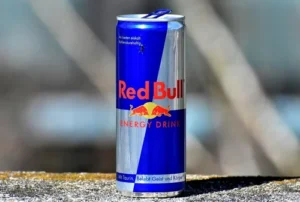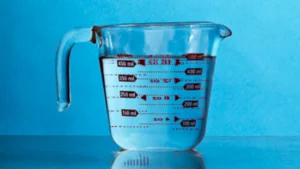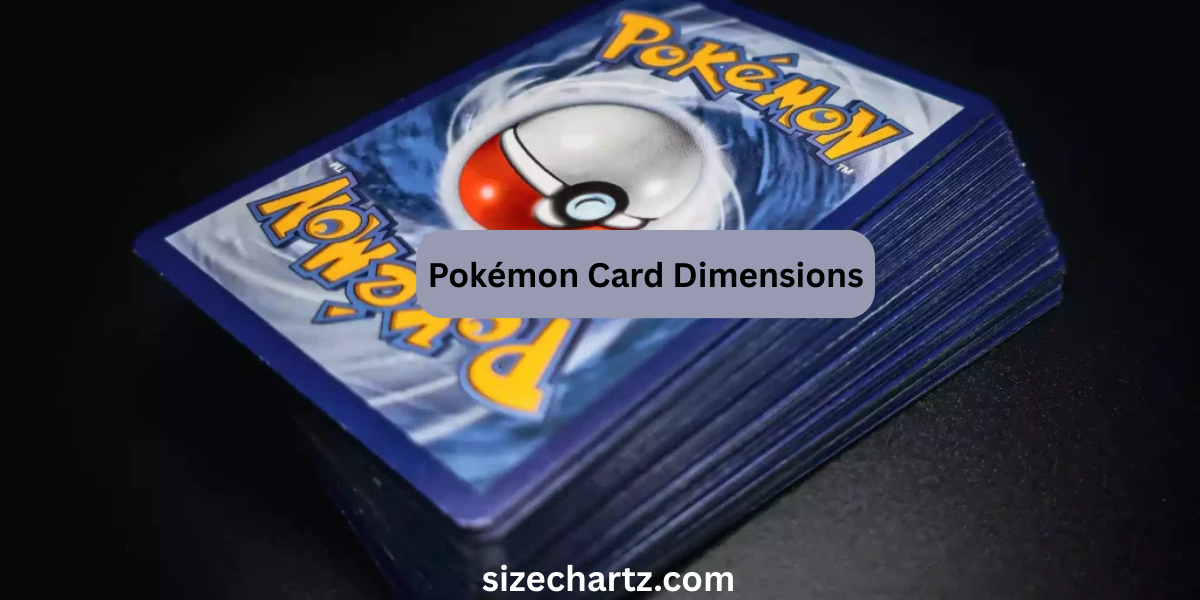Have you ever wondered how a family beach outing can turn into an unforgettable creative adventure—one where everyone ends up with their own handmade keepsake, not just a photo? That’s exactly the kind of experience waiting for you at Thunder on the Gulf (or “ThunderOnTheGulf”), especially when you dive into the fun-crafts zone. In this article, you’ll discover:
- what “fun crafts at Thunder on the Gulf” really means and why it matters;
- a wide variety of creative ideas and hands-on craft activities inspired by the coastal atmosphere;
- how you can bring that inspiration home—so you’re not just a spectator, but a maker;
- challenges, mistakes to watch out for, and how to succeed whether you’re a beginner or an advanced crafter;
- tips to get your whole family or group involved; and
- FAQs and next steps so you’re ready to go.
This is not just an event recap—it’s a deeply informative, step-by-step “how you can creative life + home” guide based on the vibes of fun crafts at Thunder on the Gulf. If you’ve been looking for a go-to resource for coastal craft ideas, family bonding through art, or just a creative break from screens—this article is for you.
What Does “Fun Crafts at Thunder on the Gulf” Mean? Definitions + Context
Defining the Event and the Craft Zone
“Fun crafts at Thunder on the Gulf” refers to the craft-and-art component of the larger Thunder on the Gulf festival, held on the Gulf Coast. According to multiple sources, the event features a wide-ranging arts & crafts section: interactive art zones, beach-inspired DIY stations, and family-friendly workshops.
In other words: it’s not simply buying handcrafted items—it’s making, participating, and engaging in craft experiences inspired by sea, sand and coastal culture.
Why It Matters
- For families: It’s a way to create memories, not just watch or buy. Research shows crafting together boosts communication and bonding.
- For hobbyists or creatives: It offers new ideas, materials (seashells, driftwood, sea-glass, jute rope, coastal pigments) and inspiration drawn from the Gulf environment.
- For anyone looking to enhance their home, décor, or lifestyle: Crafts here can spark ideas you bring back home—DIY projects, seasonal decorations, unique up-cycled pieces.
Scope of “craft” in this context
When we talk “crafts” in this setting, we include:
- Making jewellery (with seashells, sea glass, driftwood, beads)
- Coastal-themed paintings or canvases
- DIY candle making or lantern jars with ocean scent/themes
- Children’s craft zones, group mural projects, community interactive crafts
Who Should Care and Who Can Benefit
- Beginners: No heavy tools, low-stakes, fun zone. Great to try something new.
- Intermediate/Advanced crafters: Use the ideas as springboards—scale them up, refine finishes, bring home to your own space.
- Families/Groups: Shared experience, bonding, handmade keepsakes.
- Home-stylers / decorators: The coastal material palette + DIY attitude means you can bring home pieces that reflect you, not just store-bought.
The Benefits of Engaging in These Creative Craft Activities
Why Doing the Crafts (not just watching) matters
- Enhanced connection: When you make something—especially with someone else—you’re more invested.
- Customisation: Rather than mass-made décor, you end up with something truly your own.
- Skill growth: You learn painting/assembling/finishing techniques you can replicate later at home.
- Mindful break: Crafting is more than escape—it’s mind engagement, tactile experience, creative flow.
Real-life benefits you can bring home
- You’ll have display pieces or home décor made by you or your family: e.g., a seashell wind-chime you built with your child.
- You’ll gain confidence for further DIY projects—once you finish one craft, you’re more likely to take on the next.
- You’ll value handmade more—not just in buying, but in appreciating the process and materials behind things.
- You’ll ignite family traditions: maybe each year you attend or replicate one of these craft ideas at home.
Lifestyle and home décor ripple effects
Because the crafts draw from beach/coastal aesthetics (sea-glass, driftwood, ocean hues), they bring home these style elements:
- Colour palettes: aqua, turquoise, sandy beige, driftwood grey.
- Materials: reclaimed wood, rope/jute, sea glass, shells, Mason jars, natural textures.
- Techniques: up-cycling, mixed media, layering texture, hand finish (not factory-perfect) which adds visual interest.
- Attitude: “I can craft this” rather than “I’ll buy this.” That’s empowering and shifts how you perceive your home pieces.
The Challenges and Misconceptions You Should Know
Misconception: “Crafts are only for kids or beginners”
- Truth: Even advanced makers can use these craft stations as idea fuel—they’re easy entry points into more advanced creative work.
- Truth: The quality of some of the artisan work is high; you may not build a masterpiece in 20 minutes, but you build something meaningful.
Misconception: “It’ll cost a lot”
- Reality: Often, the craft workshops are modestly priced; many materials revolve around found/low-cost items (shells, driftwood, recycled materials) as sources note.
- But: You still need to allow time, possibly a small supply cost, and patience.
Challenge: Time, planning & finishing
- These craft experiences are fun, but they require planning if you want to bring the concept home.
- Sometimes materials/tools aren’t available locally in your region—costs/shipping matter if you want to replicate.
- Finishing matters: a driftwood piece may look raw, but to display well at home you’ll want to smooth edges, add finish/sealant, plan lighting/styling.
Challenge: “I can’t draw, I’m not creative”
- Many people hesitate. But the focus is more on process than perfection. Shell-wrapping, resin pours, simple patterns, stamping—all accessible.
- Use the event (or even your home-based DIY) as a playground—no pressure for gallery-level output.
Challenge: Materials & environment adaptation
-
The coastal craft vibe is tied to Gulf environment (shells, sea glass, driftwood). If you live inland / in Pakistan / elsewhere, you may need to adapt: use local equivalents (ex: recycled wood, found stones, local natural objects) and still keep the flavour of this “coastal craft style”.
How-To: Bring the Fun Crafts of Thunder on the Gulf Home (Step-by-Step Guide)
Here’s a practical guide to not only enjoying craft activities at the event (if you attend) but replicating or adapting them in your home/home-region.
1: Explore & choose your craft project
- At the event: walk through craft zones, note booths you like (jewellery, driftwood décor, painting, candle making).
- At home: pick one project that suits your time, budget, space, and skill. Example: “Make a driftwood photo-frame with seashell accents” or “Design a sea-glass necklace from collected beach finds.”
- Ask: What will I use or display this for? A dinner table piece? A gift? A family keepsake?
2: Plan materials, workspace & budget
- Materials list: Based on your chosen project. Example (driftwood frame): driftwood pieces, wood glue/hot glue, sandpaper, sealer finish, shells/sea-glass, rope/jute, picture frame back.
- Tools: Minimal to moderate (for beginner: glue gun, craft knife, paintbrush; for intermediate: saw, resin, drill).
- Budget: Decide upfront. Example: Spend under $50 (or equivalent) on it.
- Workspace: Clear table, protect surface, good lighting, ventilation (if paints/resin involved).
- Time: Set aside dedicated session (e.g., 2-4 hours) or break into two parts (gather/fabricate + finish/style).
3: Create with intention
- Follow your planials (driftwood: remove bark, sand edges; seashells: rinse & dry).
- Dry-layout design (arrange driftwood pieces into frame shape, add decorative items).
- Glue/assemble pieces, allow drying time.
- Add finishing touches: paint accents, sealer/spackle, rope for hanging.
- Style it: place your photo, choose location, pair with other items (beach-collected stones, small lantern).
- Adapt as you go: If a piece doesn’t fit, change orientation; if a shell cracks, substitute sea-glass piece.
4: Personalise & refine
- Make it your own: select colours that match your home décor; add a name/date to mark the family memory; use local materials if you live away from the Gulf (such as Pakistani sea-shells, recycled wood, mirrors).
- Finish & protect: If using wood on display, use clear coat or sealer so dust/residue won’t spoil the look. If jewellery: use proper clasps/finish so it’s wearable.
- Photograph your work: Before/after shots enrich the experience and give you bragging rights (and encourage future projects).
5: Display, use and reflect
- Place the finished item in your home: show it off, but also use it (hang it, wear it, gift it). A finished craft that’s stored away loses value.
- Reflect: What did you learn? What tools/materials would you change next time? Maybe next time you’ll add resin, lighting, or mixed media.
- Build on it: Use this craft as a stepping stone to a bigger project (e.g., start with a frame, next time build a driftwood wall hanging, then a furniture accent).
Real-Life Craft Examples Inspired by Thunder on the Gulf
1: Beginner-Friendly Seashell Jewelry Workshop
- Ideal for kids or beginners. Materials: seashells (washed and dried), twine or thin leather cord, beads, starfish charms (faux), claps/anchors.
- Activity: Let each person choose 3-5 shells/beads, design their necklace or anklet, finish with knot/clasp.
- Display/keep: They wear it home or hang it on a small decorative board.
- Benefit: Quick satisfaction, low cost, high fun.
2: Intermediate Driftwood Decor for Home
- Materials: reclaimed driftwood (or local salvaged wood), sandpaper, wood glue/hot glue, jute rope, shells/sea-glass, whitewash paint (optional).
- Project: Build a wall-mounted minimalist shelf or piece of wall art with driftwood base + hanging shells + rope accent.
- Finish: Seal/matte varnish, mount on wall, supply it with small potted plant or beach-collected items.
- Value: Unique décor piece with coastal character.
3: Advanced Mixed-Media Coastal Painting or Resin Tabletop
- Materials: canvas or wood panel, acrylic paints in coastal hues, texture paste/ modelling compound, optional resin (for “water effect”), sea-glass, sand, small shells embedded.
- Concept: Create a painting of shoreline with actual sand embedded, sea-glass for waves, resin top-coat for gloss.
- Benefit: A statement piece, perfect for your living room, showing serious creativity.
- Considerations: Requires more time, skill, cost—but also higher impact.
Family/Group Version: Collaborative Community Mural or Treasure Hunt Craft
- At the event you’ll find workshops where all ages join to add brush strokes or create a communal piece.
- Home adaptation: Choose a large panel/board and let each family member contribute a section (their name + motif + colour). Then hang it and treat it like a gallery piece of your “family craft day”.
Mistakes to Avoid When You’re Crafting (Either At the Event or At Home)
- Under-estimating prep time: Don’t skip cleaning/priming materials; rush leads to poor finish.
- Not protecting your space: Paint, resin, glue—they splash. Wear old clothes, protect table.
- Using unsuitable materials: Soft shells may crack; driftwood may have bark/bugs; resin may yellow if cheap.
- Ignoring finishing/sealing: Without finish, the décor piece may degrade (dusting, cracking).
- Expecting perfection: Especially in a festival-craft setting, the goal is fun and creative expression—not flawless showroom quality.
- Not planning display or use: If you create something but don’t give it a home/place, you may lose interest.
- Not adapting to your environment: If you live inland or in a different climate/culture, use local materials and adapt the theme rather than forcing coastal items not suited for your space.
Tips, Comparisons & Creative Alternatives
Useful Crafting Tips
- Bring a small kit when you attend: notebook/pen for ideas, small bag for found materials, wipes for hands.
- When shopping or creating jewellery, ask about material sourcing—sea glass, driftwood, etc. Some vendors emphasise sustainability.
- Use natural palette inspirations: Look at sea, sand, sky at the coast—note the colour tones, textures—and bring that into your home craft palette.
- For home projects, pick modular pieces: Start small (e.g., one shelf, one piece of wall art) then build outward over time.
- Store your craft tools/materials in a dedicated spot—so when inspiration hits, you’re set.
Comparison: Attending Event vs Replicating at Home
| Aspect | At the Event | At Home or In Your Local Region |
|---|---|---|
| Material variety | Wide selection of local / bespoke supplies | May need to source or substitute |
| Atmosphere | Social, interactive, instant feedback | Quiet, flexible schedule |
| Cost | Entry/workshop fees, maybe higher vendor prices | Control your budget, reuse materials |
| Time constraint | Fixed workshop times | Flexible, you set the pace |
| Finish level | Quick turnaround intended for fun | You can take time to refine and finish more |
Creative Alternatives if You Can’t Attend the Event
If you don’t live near the Gulf Coast or can’t make it to the festival:
- Create a “Coastal Craft Day at Home”: gather materials like sand, sea-glass (or glass pebbles), driftwood (or local “found wood”), shells from a local beach or craft store. Use the ideas above.
- Adapt the theme to your locale: If you’re in Karachi, Pakistan (for example), you can use local shells, local driftwood or reclaimed wood from local markets, tie the craft to your regional cultural colours or patterns.
- Use virtual tutorials: some vendors or craft bloggers from the event may share online guides; follow along at your pace.
- Host a craft swap: gather a small group and each bring a “found” material (wood, shell, cloth) and craft together.
Industry Trends & Insights in Crafting + Handmade Culture
Trend: Sustainable, Upcycled, Found-Materials Crafts
Many workshops noted at Thunder on the Gulf emphasise eco-friendly materials (recycled plastics, up-cycled driftwood, sea-glass). This reflects a broader trend: crafting that’s environmentally considerate and rooted in “found beauty”.
Trend: Experiential, Interactive Crafts vs Passive Consumption
Instead of simply buying pretty items, people now seek experience—making the item themselves, interacting with artisans, learning a skill. The event’s “live demonstrations” and “group art zones” exemplify this.
Trend: DIY Home Décor Inspired by Travel & Location
Travelling, seeing coastal art, shells, driftwood—these translate into home décor trends. People bring back ideas from events like this and replicate at home. That means craft blogs, workshops, and home-DIY culture are inter-linked.
Trend: Family-Friendly Crafting as Lifestyle
Crafting is no longer siloed into “hobby” for one person—families increasingly embrace it as a shared activity. Events like Thunder on the Gulf show this by providing craft zones for all ages.
Insight: Local Economy and Artisan Empowerment
Craft festivals boost local artisans, create market for handmade goods, support sustainable local tourism. For attendees, buying from such events also means supporting craft communities.
FAQs: Your Crafting Questions Answered
Q: Do I need to be an experienced crafter to join the workshops at Thunder on the Gulf?
A: No. Many of the craft booths are beginner-friendly, designed for families and people with little to no experience. You’ll still learn something new—but don’t worry about being “skilled” already.
Q: What materials will I need if I replicate a craft at home?
A: That depends on the project—some examples: seashells, driftwood, sea glass (or local equivalents), jute/rope, twine, glue (hot glue or craft glue), paint (acrylic or spray), canvas or wood panel, sandpaper, protective finish (sealer), jewellery hardware (clasps, earring hooks). Use substitutes if local materials are different.
Q: Are the craft costs high at the event?
A: They vary. Some basic craft stations may have modest fees; buying handcrafted items may cost more. But the emphasis is on accessible, fun crafts, not ultra-luxury pricing. (Always check ahead if you plan to attend.)
Q: Can I bring the craft home and display it?
A: Absolutely—you should. The idea is to create something you’ll use or display, not let it sit in a drawer. Think ahead about how you’ll show it in your home.
Q: What if I live far from the Gulf coast? Can I still use these ideas?
A: Yes! Use the spirit of the crafts—coastal colours, textures, natural materials—and adapt them to your local environment. For example, local woods, local shells/beach finds, stones, textiles from your region, etc.
Q: Will children enjoy these crafts or will it be too advanced?
A: Many craft zones are specifically geared toward kids—supervised, low-risk, fun. But always check age recommendations, and plan for some mess and fun. Let yourself be okay with “imperfect”—that’s part of the experience.
Q: What if I finish my craft but it looks amateurish?
A: That’s okay—and expected. Handmade means character, not perfection. The value is in the process, memory, personalisation. You can always go back later and refine.
Q: Can I turn these craft ideas into home décor or gift-making?
A: Definitely. For example: seashell wind-chimes for your patio, driftwood picture frames as gifts, sea-glass jewellery for friends, summer-themed wall art for your living room. These become personal items, not mass-made.
Closing: Your Creative Next Step
Now that you’ve explored the full spectrum of what “fun crafts at Thunder on the Gulf” entails—from the festival’s interactive craft zones to ideas you can bring home—here’s your simple next step:
Pick one craft idea from this article today (for example: “seashell jewellery” or “driftwood décor”) and schedule 1 hour this week to go gather your materials, set up your workspace, and make a start. It doesn’t have to be perfect—what matters is starting and finishing.
By doing this, you’re not just attending a festival concept—you’re bringing the festival home, unlocking creativity in your space, strengthening family or personal craft habits, and turning resources (shells, wood, found objects) into meaningful, handmade items.
Go ahead and take that step. Let the coast-inspired craft adventure begin—and let your home, your hands, and your creative spirit reflect it.
















